*
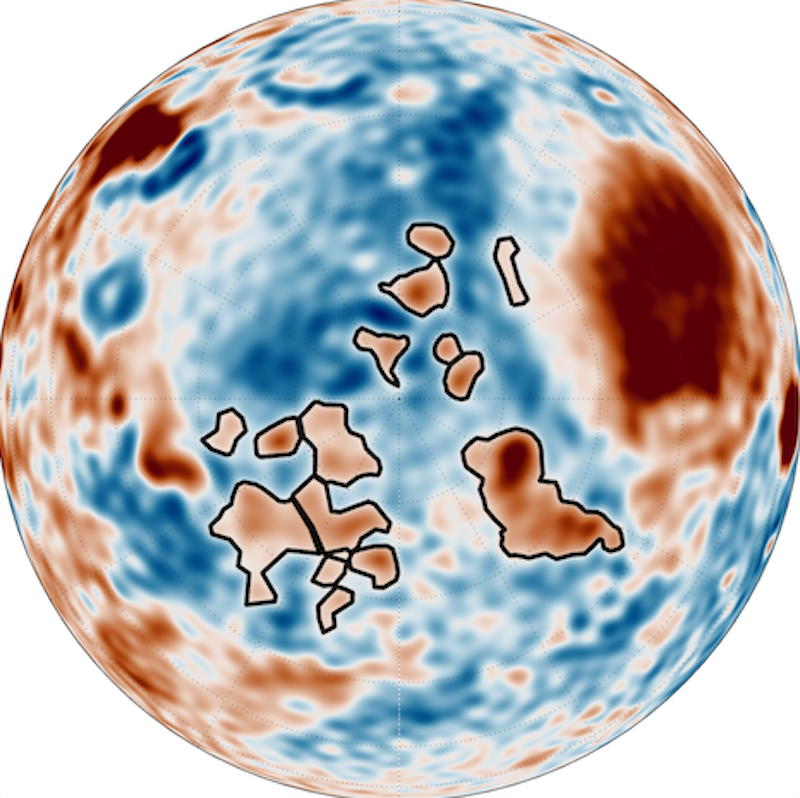
- Mars is geologically rich below its surface. It has extensive ice deposits and maybe even liquid water deep down. What else lies underground on Mars?
- Scientists have found about 20 “structures” below Mars’ surface. They are denser than the surrounding rock and are buried beneath a thick layer of sediment in the planet’s northern hemisphere. The sediment might be from a former ancient ocean on Mars.
- A massive pool of lava might also lie beneath Olympus Mons, the largest volcano on Mars. The lava appears to be pushing up toward Mars’ surface.
Surprises from a new Mars gravity map
Scientists have discovered multiple large-scale dense features, or “structures,” below the northern hemisphere of Mars. The massive structures are buried underneath a smooth layer of sediment, which scientists think is from a former ancient ocean. In addition, there is also evidence for active processes – possibly lava – beneath Olympus Mons, the largest volcano on Mars. Researchers at the Delft University of Technology (TU Delft) in The Netherlands said on September 13, 2024, they made the findings using a new gravity map of Mars, with data from multiple Mars missions.
The researchers, led by Bart Root of TU Delft, presented their findings at the Europlanet Science Congress 2024 earlier this month. You can read the abstract here.
Studies of gravity variations at Mars have revealed dense, large-scale structures hidden beneath the sediment layers of a lost ocean. The findings have been presented at the #EPSC2024 by Bart Root of @tudelft: pic.twitter.com/dLPNaNVtBb
— Europlanet ?? (@europlanetmedia) September 13, 2024
Hidden features below buried Mars’ ocean sediments?
The dense structures lie in the northern hemisphere of Mars, in the planet’s crust. They are significantly denser than other surrounding rock. Also, they’re beneath a thick and smooth layer of sediment. The researchers said this sediment is likely from a former ancient ocean in Mars’ northern hemisphere. This is something scientists have also discussed and debated for decades.
Altogether, there are about 20 of the unusual structures of various sizes. They are about 300-400 kg/m3 (kilograms per cubic meter/ 19-25 pounds per cubic foot) denser than the surrounding rock. So, what are they? As Root explained:
These dense structures could be volcanic in origin or could be compacted material due to ancient impacts. There are around 20 features of varying sizes that we have identified dotted around the area surrounding the north polar cap, one of which resembles the shape of a dog.
The anomalies are completely buried, with no signs of them on the Martian surface. Root added:
There seems to be no trace of them at the surface. However, through gravity data, we have a tantalizing glimpse into the older history of the northern hemisphere of Mars.

Discovery of the anomalies
So, how did the researchers find the unusual features? They created a gravity map of Mars by looking at tiny deviations in the orbits of spacecraft around the planet. The researchers analyzed those deviations for clues about Mars’ internal structure and distribution of mass. Gravitational variations within Mars can show differences in the density of any subsurface geologic structures.
Meanwhile, NASA’s InSight Lander mission had studied the Martian crust, including its thickness and flexibility. The research team combined the data from InSight with that from the orbiters in a new computer model. In addition, they included data from deeper down in Mars’ mantle. The resulting gravity map revealed the locations of the dense structures below the surface.
Lava below Olympus Mons?
Also, apart from the dense anomalies, the map showed something else. The Tharsis region is a massive volcanic plateau, which includes Olympus Mons, the largest volcano on Mars. Scientists knew a region of weaker gravity and lower density surrounds the plateau. But why? The new map provided some clues. There is a huge mass of lighter material below it, about 1,080 miles (1,740 km) across and 680 miles (1,095 km) deep. The researchers said this material could explain why Tharsis is so much higher in elevation than the surrounding terrain.
Indeed, according to the new study, that material could be lava. It is moving up toward the surface, causing the upwelling. Root said:
The NASA InSight mission has given us vital new information about the hard outer layer of Mars. This means we need to rethink how we understand the support for the Olympus Mons volcano and its surroundings. It shows that Mars might still have active movements happening inside it, affecting and possibly making new volcanic features on the surface.
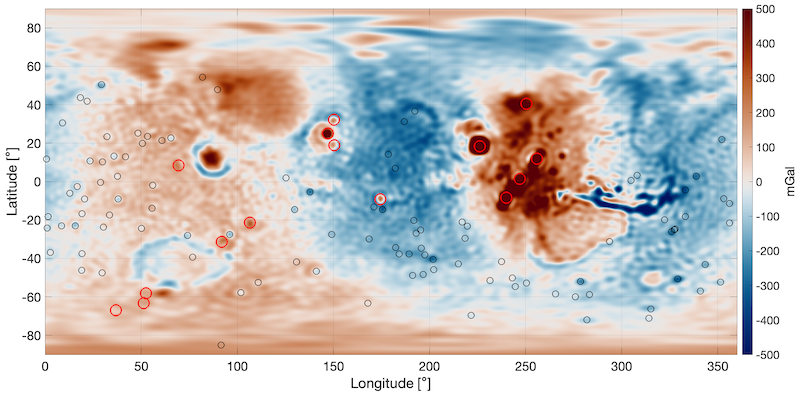
Martian Quantum Gravity mission
Determining just what the subsurface structures are will require a follow-up mission. That’s where the proposed Martian Quantum Gravity (MaQuls) mission comes in. It will study gravity variations and use some of the same technology from the GRAIL and GRACE missions. GRAIL studied the gravity field of the moon, while GRACE measured Earth’s gravity field and more.
Lisa Wörner at the German Aerospace Centre (DLR) said:
Observations with MaQuIs would enable us to better explore the subsurface of Mars. This would help us to find out more about these mysterious hidden features and study ongoing mantle convection, as well as understand dynamic surface processes like atmospheric seasonal changes and the detection of ground water reservoirs.
Bottom line: A new Mars gravity map shows odd hidden structures below the surface of Mars. Some might be related to a former ocean. Others might be lava!
Source: Exploration of high mass subsurface structures in the northern hemisphere with joint flexure and mantle convection modelling of the Martian gravity field
Via Europlanet Society
Read more: What the Chinese Zhurong rover found beneath Mars’ surface
Read more: Is Mars volcanically active?


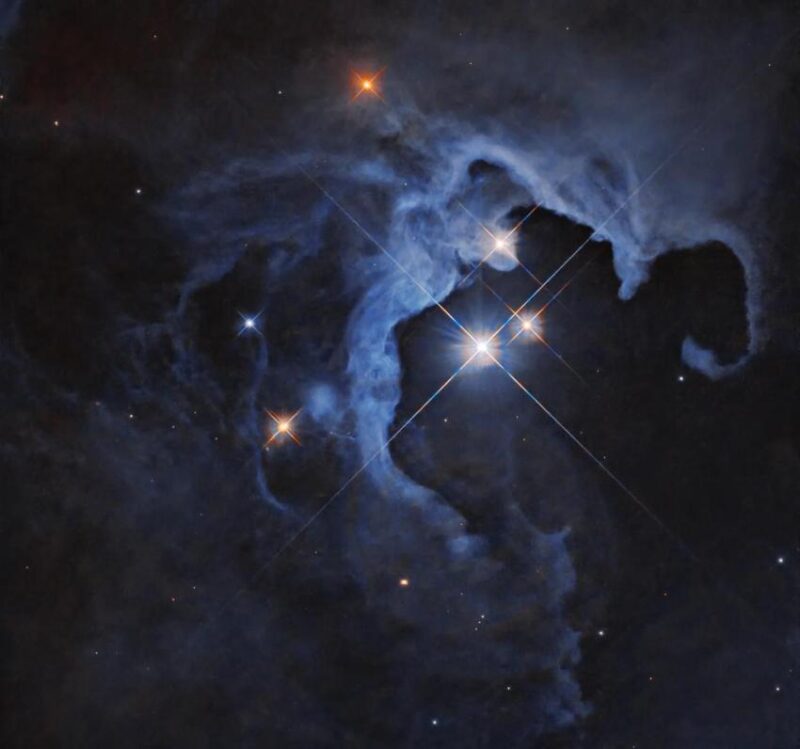
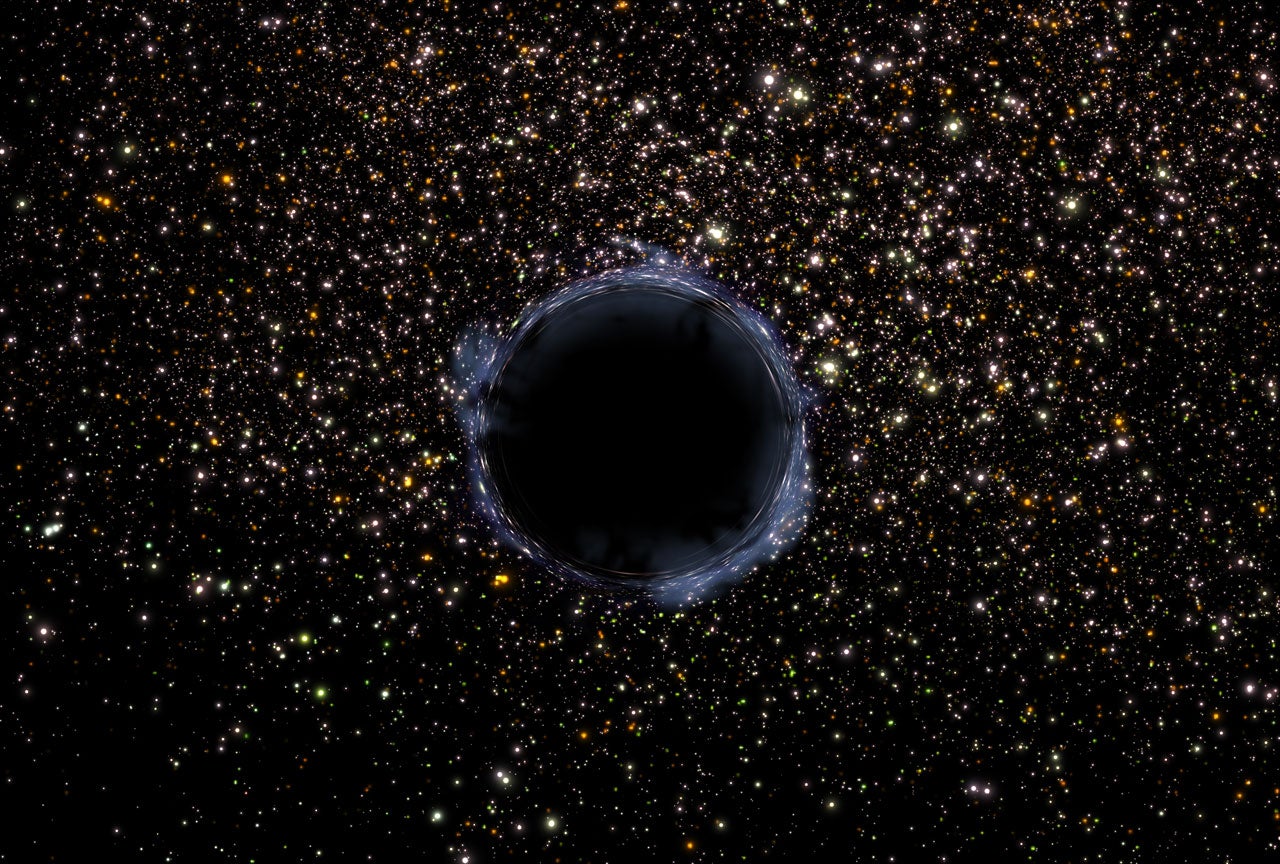
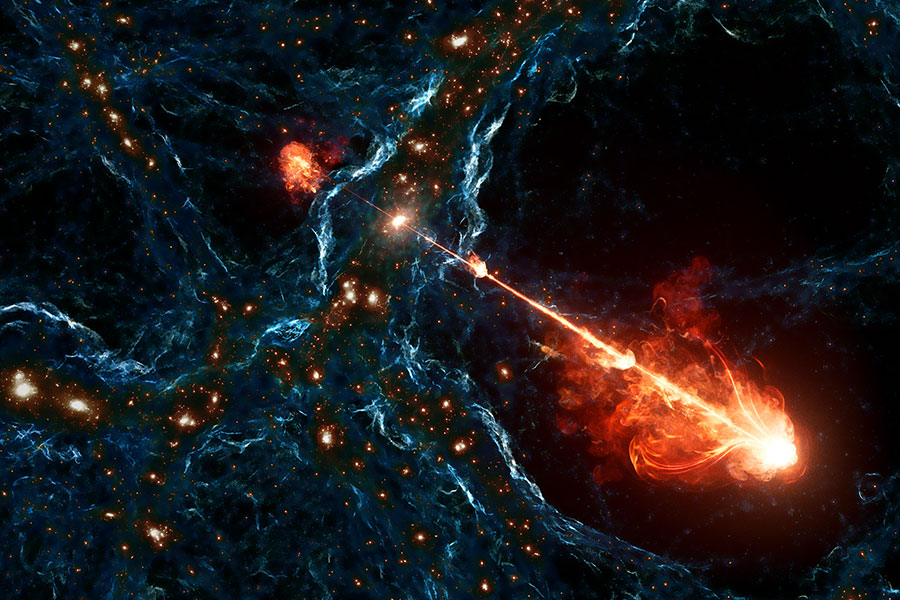
No comments! Be the first commenter?